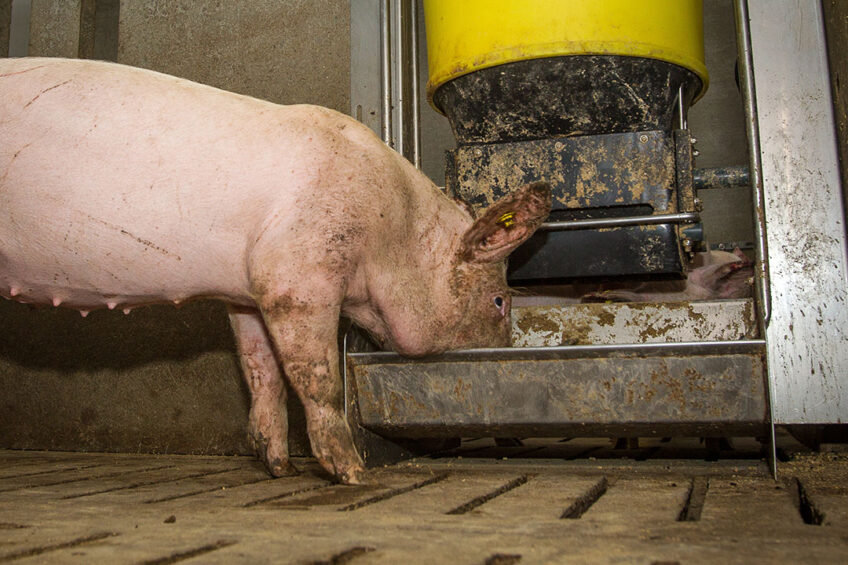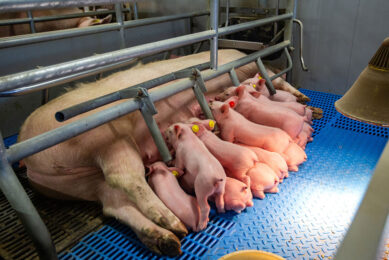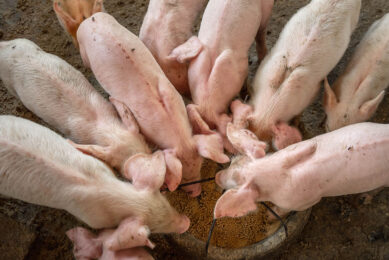Organic trace minerals minimally affect cartilage properties

US researchers recently evaluated the impact of organic trace mineral complexes on the recovery of early-stage osteochondrotic lesions induced via a vitamin D deficiency in humeral head cartilage in pigs.
Articular cartilage is a porous material comprised of a network of proteoglycans. These are dispersed within a matrix of collagen fibrils, which absorbs loads and provides joints with a low-friction contact interface. In pigs, structural development of the extracellular matrix is affected by dietary factors such as vitamin D and trace minerals. In addition, articular cartilage development depends on the coordination of various proteins and signaling molecules. However, the effects of vitamin D deficiency and trace mineral bioavailability in the development of articular cartilage structural properties are not well understood.
Data collection
The researchers established early stage osteochondrosis with a vitamin D deficient model in 12 pigs. They did this to assess the impact of organic trace mineral complexes on lesion recovery. They then fed a vitamin D deficient mix to gestating and lactating sows to induce kyphosis (a forward rounding of the upper back), and to influence bone mineral density and femur mechanical properties in subsequent offspring.
After weaning at 4 weeks of age, they fed all offspring a diet with no supplemental vitamin D but formulated to supply 150% of the dietary calcium and 120% of the dietary phosphorus requirements for 3 weeks. After the 3-week nursery phase, they assigned pigs to 1 of 4 dietary treatment groups until 24 weeks of age. Dietary treatments included inorganic zinc and manganese, organic complexed zinc, organic complexed manganese, and a combination of organic complexed zinc and manganese.
The control group consisted of 5 pigs that were offspring of sows fed a diet with sufficient vitamin D through gestation and lactation, followed by the standard diet fed to growing pigs until harvest. Pigs were euthanised at 24 weeks of age and the left humeral heads were harvested. The team obtained the cartilage plugs from the central, cranial, caudal, medial, and lateral positions of the humeral head. They measured linear elastic modulus and dissipated energy under compression to determine cartilage properties.
Cartilage from pigs fed inorganic zinc and manganese diets had the greatest resistance, whereas samples from the organic complexed zinc pigs had the least resistance
Resistance to elastic deformation under stress
Anatomical location had a significant influence on resistance to elastic deformation under stress. The caudal location had the greatest resistance, and the cranial location had the least. However, because the loading patterns in the porcine humerus have not been reported, the results cannot be used to imply whether the high- or low-weight bearing regions are stiffer. In addition, diet affected the resistance to elastic deformation under stress. Cartilage from pigs fed inorganic zinc and manganese diets had the greatest resistance, whereas samples from the organic complexed zinc pigs had the least resistance.
Energy dissipation
Anatomical location did not impact energy dissipation. Energy dissipation was significantly affected by dietary treatments, with organic complexed zinc and manganese samples dissipating less energy than inorganic zinc and manganese samples. Because organic complexed zinc and manganese is expected to be a more bioavailable source of minerals than inorganic sources, the added availability may have slowed the maturation of material properties or altered their matrix development some other way. Lower energy dissipation would make tissue more susceptible to damage, as the total work required to cause damage in cartilage is a combination of the fracture energy, poroelastic energy, and viscoelastic energy. Therefore, these findings suggest a potential benefit of the inorganic zinc and manganese diet during development.
Minimal effects
The presence of trace minerals in all diets supports full recovery of cartilage mechanical property development. However, the effects of organic trace mineral complexes did not further improve cartilage recovery beyond that of inorganic trace mineral supplementation. Therefore, the authors concluded that trace mineral bioavailability after vitamin-D deficiency has minimal effects on articular cartilage material properties.
The article in the Journal of Biomechanics was authored by Charles C. Hower from Department of Biomedical Engineering, University of Wisconsin-Madison, Alexey A. Minaev from Department of Biochemistry, University of Wisconsin-Madison, Laura A. Amundson from Department of Animal and Dairy Sciences, University of Wisconsin-Madison, and Research and Discovery, Zinpro Corporation, Thomas D. Crenshaw from Department of Animal and Dairy Sciences, University of Wisconsin-Madison, and Corinne R. Henak from Department of Biomedical Engineering, Department of Mechanical Engineering, and Department of Orthopedics and Rehabilitation, University of Wisconsin-Madison, United States.
 Beheer
Beheer








 WP Admin
WP Admin  Bewerk bericht
Bewerk bericht